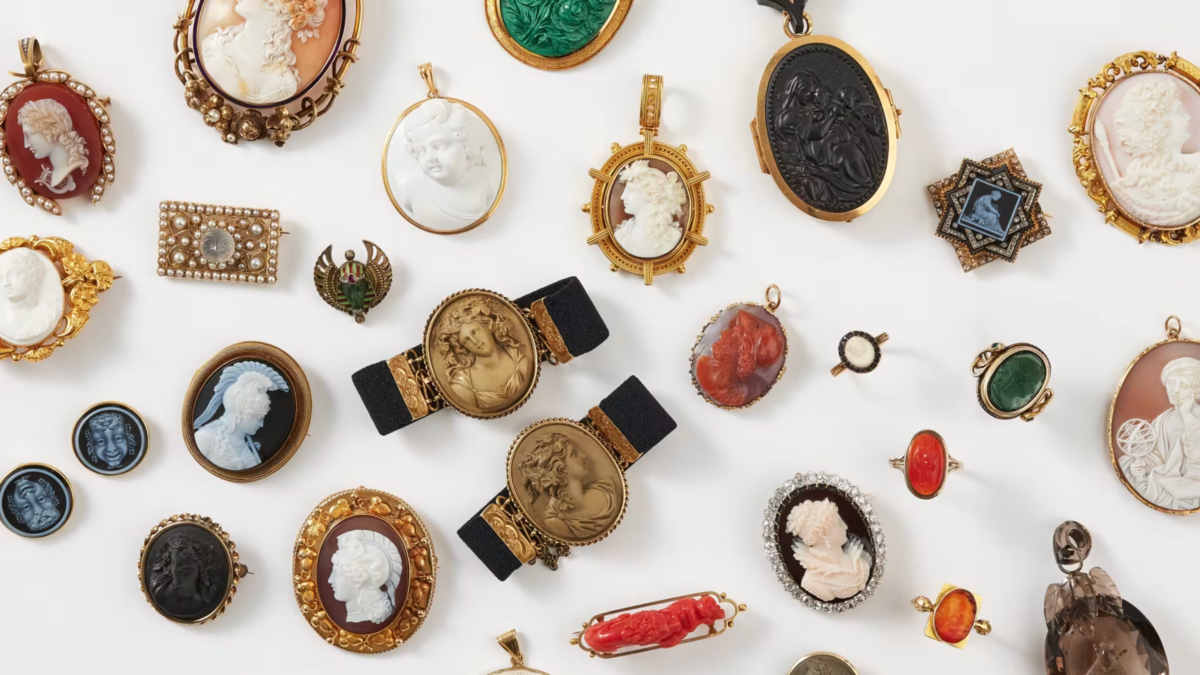
Irresistible cameo collection in autumn’s Fine Art & Antiques
The cameo collection will be included in the Fine Art auction Fine Art & Antiques at Stockholms Auktionsverk on December 5–6 and will be displayed at Nybrogatan 32 between November 29 and December 4.
Lava rock, seashell, agate, bone, emerald and gutta-percha – a cameo can look many different ways. A versatility that becomes evident when Stockholm’s Auktionsverk is now selling a significant collection of 51 objects ranging from Roman antiquity to the middle of the 20th century. A broad collection within a niche area that was previously exhibited in its entirety at the Hallwylska Museum and with selected parts at the National Museum and Prins Eugen’s Waldemarsudde
– Cameos are a very complex art form where shadows and details have been chiseled out of a single piece with great care. I really hope this collection gets the appreciation it deserves. Cameo jewelry is so much more than mass-produced pendants, they are small works of art that you put an incredible amount of time and craftsmanship into. Seashells and lava stone are relatively easy to process, but the cameos in precious stones take an incredibly long time – the ones in agate must have taken a year to make, says Sandra Johansson, who is a jewelery specialist at Stockholms Auktionsverk.

Cameos and intaglios are a sculptural art form in miniature format that are not only beautiful to look at, but also give the viewer a unique opportunity to look straight into history. They reveal behaviors and customs, historical and social events that marked our past. During Greek and Roman antiquity, they were a clear status object. Intaglio – which means a deepened engraving – was used as a seal to identify oneself, protect property and authenticate documents. They were valued so highly that when they died they left instructions on how to use the seal, not infrequently they were buried with their seal to be on the safe side. It was a status object that assured others of who you were and what your position was.
The warlords of the Roman heyday used cameos as decoration on their armor to bring strength into battle, as pins to secure their cloaks but also as objects to collect for fun. The gods and goddesses Jupiter, Minerva, Juno, Roma—the Roman version of Athena, the goddess of wisdom and war—and other allegorical figures were popular motifs. The symbolic carvings were very important to the Romans and symbols of happiness, love, magic and worship were recurring themes.
During the Middle Ages and the Renaissance, the motifs revolved around the Christian faith and were something people drew strength from. They then turned completely against the ancient models and converted their old cameos into more modern versions. A new context was simply invented to remove the Roman symbolism and deities in favor of more Christian motifs. At the same time, the materials had their own meanings, where different gems were considered to have different properties and in many cases were used as medicine.

Early in the 1800s, the wind in the jewelry box turned again and new cameos began to be made with ancient jewelry as a model, Napoleon had taken over France through the revolution and all expressions from the old Roman Empire became the highest fashion. During that time, the portraits of the cameos became tighter and completely freed from lull-lull. However, when Queen Victoria came to power in England around 1840, depictions became more romantic with flowers and sentimental details – her loving marriage to Prince Albert was reflected in most artistic expressions during this time.
– It’s so much fun with this collection and with cameos as an expression, it’s easy to follow the historical eras through them. You can see exactly what technology was available and what trends prevailed. At the same time, it is very moving to look at the jewelry and let your imagination run wild. Individually, they are 51 very personal gifts that are meant to bring happiness or express love to their recipients, many have been designed with a special person in mind. They are small miniature works of art that hold an incredible amount more than meets the eye.
